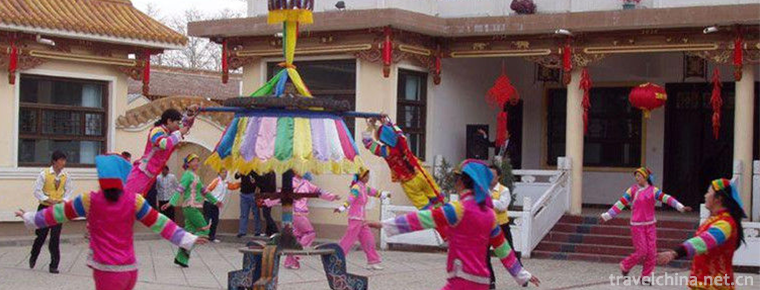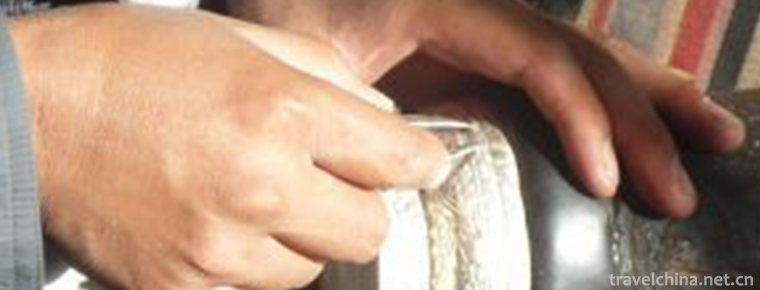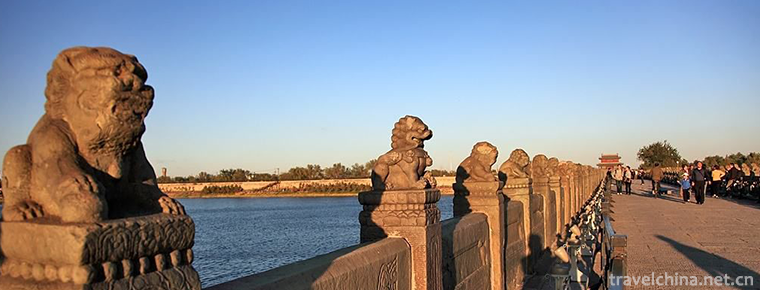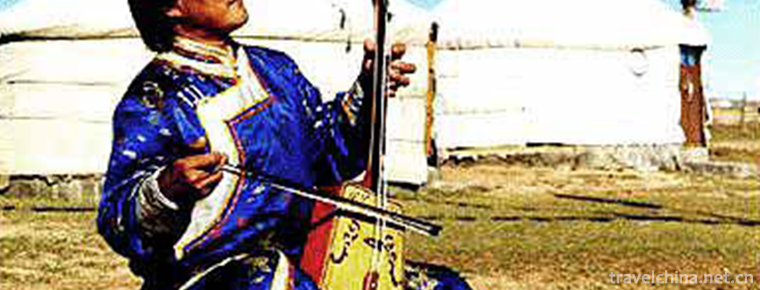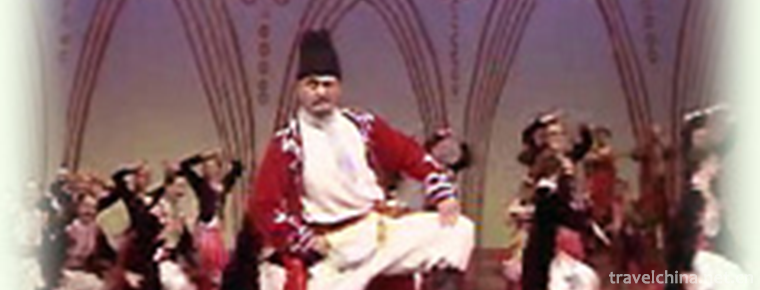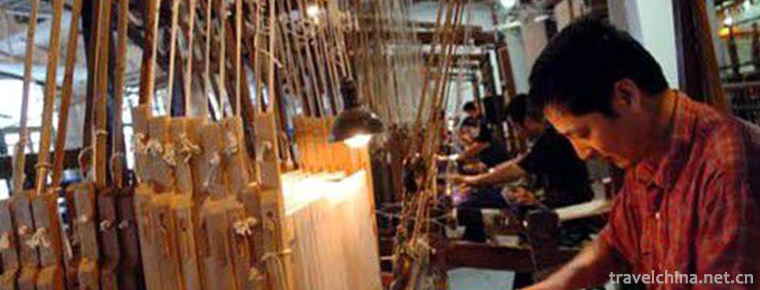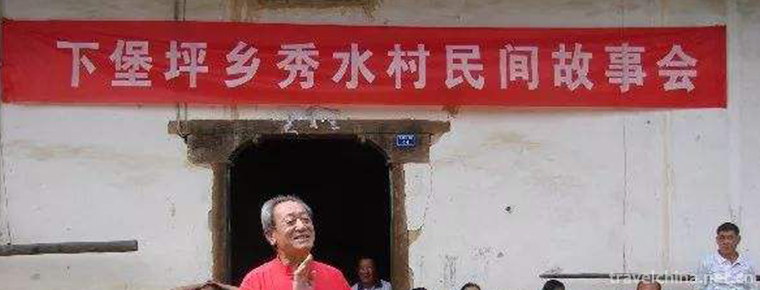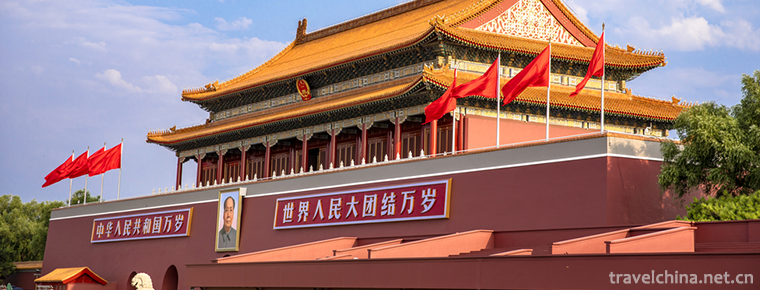Taihao Fuxi Festival
Taihao Fuxi Festival
Taihao Fuxi Festival is a traditional folk custom and folk sacrificial activity with a long history. Fuxi was the founder of Chinese civilization. He taught shareholding, tools, farming, marriage, family name, book deeds, gossip, and led people out of the chaos of the great enlightenment with the lights of civilization, ending the life style of the primitive era. Fuxi's achievements in opening the heavens and enlightening the way laid the foundation for the prosperity of Chinese civilization for thousands of years. In order to commemorate and highlight Fuxi's achievements, later generations built Fuxi Temple and carried out annual sacrificial activities. Taihao Fuxi memorial ceremony mainly includes the public memorial ceremony of Tianshui City, Gansu Province, and the Taihao Fuxi Mausoleum in Huaiyang County, Henan Province.
On May 20, 2006, the "Taihao Fuxi Festival" jointly declared by Huaiyang County, Henan Province, Tianshui City, Gansu Province, was listed in the first batch of national intangible cultural heritage list with the approval of the State Council.
Origin of Festivals
Schools
Tianshui Taihao Fuxi Public Festival
In recent years, the Gansu Provincial Party Committee and the provincial government attach great importance to Fuxi sacrifice activities. Since 2005, annual ceremonies have been sponsored by the Gansu Provincial Government. Fuxi Festival has played a positive role in enhancing the cohesion of the Chinese nation and building a harmonious society.
Since 1988, the annual ceremony of Tianshui public sacrifice to Fuxi, the ancestor of humanity, has become one of the ways for compatriots at home and abroad to seek their roots and worship their ancestors. By 2008, 19 sessions had been held.
On June 22, 2008, the Fuxi Festival of Gansu Province and the Fuxi Cultural Tourism Festival of Tianshui in 2008 (E-Zi) were planned to be held. However, affected by the "5.12" Wenchuan Earthquake and its aftershocks, earthquake relief and post-disaster reconstruction became the first task at that time. With the approval of the provincial government, Tianshui City reported that the Fuxi Festival of Gansu Province and the Tianshui Cultural Tourism Festival of China would be held in 2008 (E-Zi). Xicultural Tourism Festival is temporarily suspended .
In 2009, due to the heavy task of reconstruction after the earthquake, the Gansu Provincial Government decided to suspend the public memorial ceremony of Fuxi in Gansu Province in 2009.
Festival of Fuxi Mausoleum in Taihao, Huaiyang
Taihao Fuxi Mausoleum Temple is located 1.5 kilometers north of Huaiyang County, Henan Province. It is called "the first mausoleum in the world" because it is the "ancestor of humanity" of the Chinese nation.
Every year from February 2 to March 3 of the lunar calendar, a sacrifice ceremony is held at Taihao Mausoleum in Huaiyang County, Henan Province. During the festival activities, temple fairs also took more than a month, but the most lively ones were the 10 days from the tenth day of February to the twentieth of February, the three days from the fourteenth of February to the sixteenth of February, which could be said to be the peak of the festival. The crowds of people who visited the festival were running shoulder to shoulder, gathering thousands of people, reaching more than 200,000 people every day.
According to the book "General Situation of Taihaoling Temple Fair in Chenzhou", it should begin after Zhao Zong. Apart from Henan, the influence of temple fairs extends to dozens of counties (cities) in Anhui, Shandong and Hebei provinces. The venue is about one square kilometre in size, with a variety of industries, all of which are well equipped, with ancestor worship as the core content. The Clay Dog and other clay toys sold at the temple fair are praised as "true totem" and "living fossil" by some experts and scholars at home and abroad. There is also the legend that "Bu Tiger" originated from the marriage of Fuxi Nuwa's brother and sister, which reflects the memory and admiration of Chinese descendants for Fuxi and Nuwa, and is the materialization and symbol of the worship of early human reproduction. In the long-term historical evolution, the majority of the working people transformed their wishes, ideals and aesthetic interests into appreciable and sensible cultural forms into temple fair activities during the festival, forming a specific ceremony. It includes sacrificial and vulgar music and dance, the meaning of "admonishing kindness" and the traditional folk arts and crafts that retain the consciousness of human childhood, thus resulting in the profound cultural connotation and rich and colorful forms of expression of the Ancestor Temple Fair.
Festival activities
Tianshui City in Gansu Province is one of the birthplaces of Chinese culture and the birthplace of Fuxi, the ancestor of human civilization. The sacrificial activities of Fuxi Temple in Tianshui began in the nineteenth year of Chenghua in Ming Dynasty (1483), and have continued to this day. There are differences in sacrificial specifications and contents in different historical periods. It flourished most in the Ming Dynasty. The court issued sacrificial ceremonies, using the specifications of Tailao, offering two sacrifices a year and three sacrifices a day, solemnly and sacred. In the Qing Dynasty, the sacrificial procedure was simplified and the etiquette was brief. In the period of the Republic of China, the Shangyuan Society, a Chinese folk sacrificial organization, presided over the sacrifices. After the founding of the People's Republic of China, the sacrificial specifications of the Qing Dynasty were gradually restored. The date of sacrifice was changed from 15 January to 17 January, three days of one sacrifice, one welcome ceremony, two ceremonies and three gifts. Tianshui Taihao Fuxi Festival includes civil and public offerings. Folk sacrificial activities in China include the following:
Head of the meeting
As early as on the thirteenth day of the first lunar month, generally on the fourteenth or fifteenth day of the first lunar month, Shangyuan will enter the Fuxi Temple one after another, and begin to clean the courtyards, do a lot of hygiene, and discuss the sacrifice of this year. (1) Elect the chief sacrificial and accompany the sacrificial. (2) Arrange for the preparation of the reception ceremony. The main sacrificial is made up of celebrities of Tianshui and a number of accompanying sacrificials. They are composed of the congregation of Yuan Dynasty and local people.
Please God
On the sixteenth day of the first month (now for convenience at some time on the fifteenth day of the first month), the Master read: "Wash your hands! The Lord and the accompanying offerings are in place, please God to begin. "The chief sacrificial accompanies the sacrificial and washes his hands in clear water. Then, according to the order of the middle and the two sides, the elders live in the middle and stand in the Fuxi Temple respectfully.
Four gods were invited, Fuxi, Shennong, Xuanyuan and Fangshen. Fuxi is the humanistic ancestor of the Chinese nation, ranking first among the three emperors, so it is shared by Shennong and Xuanyuan. Fangshen was originally offered in the visiting hall, but now it is offered to the people near the temple. According to the local people, Fuxi was born before the gods, offering sacrifices to Fuxi's ancient ancestors rather than religion. Therefore, all the gods were inexperienced to accompany Fuxi's ancestors. Because Fang Shen was the God on duty and was the earliest person to build Fuxi Temple, they could only enter the temple on the day. Fang Shen, who was born in Qinzhou and had been the assassin of Zhuzhou in Xiankang Period of Jin Dynasty, was the emperor of Kuomintang, Heichi Dragon King. Yuanxing three years Daocheng, Shang N. The mountain is called Leiwushan because of its name. Houjun people thought of their virtues and erected ancestral halls in the sun of Tianjing Mountain. "(See the Preface to the Dragon King of Black Pool, Heiye Temple, Jianjiahe).
The Master read "Incense burning, candlelighting, drumming, bell ringing, cannon firing; Standing sacrificial incense burning and mounting, kneeling and confessing". Heart-stirring, Shennong, Xuanyuan from the warmth pavilion, offered in front of the pavilion table Fuxi sacred statue on both sides. The Master read out: "Kneel, worship, go! Kneel, worship, go! Kneel, worship, go! Three buckle, kneel, worship, go!"
Animal husbandry
The animals should pay attention to the "black pig's arch and the sheep's trembling". Two black (non-variegated) boars were selected. A bag of loess was placed in the hall and now on the platform. According to legend, if Fu Xi is happy at this moment, he will go straight to the Loess Plateau and use his mouth to arch. If Fu Xi is not happy at the moment, the black pig will pull and pee. Then people will wait for the auspicious time. "Sheep tremor" means that when the main sacrificial kneels and confesses, the sheep will tremble all over, meaning that Fuxi leads the animal.
Blood donation and blood grabbing
When slaughtering a black pig, he put out a lock of bristles and put it in a hot dish, offering it to the table, burning incense and ordering candles, carrying three buckles. At the same time, all the people rushed to dip in warm blood, some with yellow paper, some with Renminbi, now most with Renminbi. Paper dipped with pig blood can be used to open mountain paper, referring to the hunter's hunting to burn the blood paper, can go hunting in the mountains, tigers avoid snakes and retreat. It can also be used as market paper. When the shop opens, it can be burned and distributed in the city. The financial resources are rolling. Blood paper incineration ash can also be taken to treat abdominal phlegm and so on. The RMB dipped in pig blood will bless the bearer with good luck and good luck.
first libation in a sacrifice
The celebration officially began, and the priest read: "The priest and the accompanying priest are in position, ringing bells, drums, guns and playing music. "1) toasting, offering and drinking. (2) Congratulations. Two copies of the Zhuwen are available on the Zhuwen shelf. (3) Three contributions. Noodles refer to bergamot, longevity peach and pomegranate pastries and fruits. 4. Offer four chopsticks, spoons and pieces of paper dipped in small dishes. Offer the enclosure. It refers to cold dishes, which contain four ingredients. Four meat: pork liver, steak, pig ear, elbow; four element: tofu, bean sprouts, vermicelli and yellow radish. Read the congratulations respectfully. After reading the congratulations, one of them will be burned in the incense burner in the temple, and the other will still be on the shelf of the congratulations. After that, the ceremonialist announced that he would do three buckles, and then declare the first gift.
Ya Xian
Yanan offered food with the same etiquette as the first offering. The rate includes four big four middle and four small dishes. Four dishes have big chowder, braised elbow, shrimp sauce meat and steamed pork; Four dishes have a plate of chicken, a plate of fish, a plate of duck, a plate of sea cucumber; Four small dishes are Babao rice, steamed cabbage, shepherd's purse vegetable and money vegetable.
Three offering
The three is to offer food, especially pork, cattle and sheep. Including Jing Ding, Gong Ding and Xian Ding. The pig head, cow head and sheep head are offered to the table step by step, that is, the so-called "slaughter of black cattle and white horse" by the people. (2) Presentation of plates. Pan is steamed steamed bun. Twelve are offered in the ordinary year and thirteen in the leap year. 3. Soup. Two bowls of soup, that is, two bowls of soup. Divide dishes. Cut a piece of pig, beef and goat with a small knife and put it in a iron spoon with white spirit. This is Fuxi's religion's custom of "first eating and cooked". Making soup. The chef of the main spoon personally soups hot dishes, which is called fake soup, and gives red envelopes to thank the chef. Then the Master announced that the three gifts were over. Next, all the participants worshipped each other and looked at the Fuxi Holy Statue. Because it is the right time, all the people pay homage to each other at this time, and then look at the holy image together.
send off the gods after the offering of sacrifices
On the morning of the eighteenth day of the first lunar month, according to the orientation of the happy God on this day, all kinds of meals will be offered, each taking a little, and then the hairy blood, wishes and so on will be sacrificed or burned in the direction of the happy god. Then drink tea and wine, at this time wine must be yellow wine, and then three kowtows. After that, Shennong and Huangdi were re-presented to the warmth grid in the hall, and Fangshen was sent back to Fangsheng Temple. After that, Zhuwen and paper ash were sprinkled in the long running water by the river.
The basic characteristics of Fuxi Temple's sacrificial activities are as follows: 1. the dependence on traditional folk customs formed with the emergence and development of folk activities; 2. the relatively fixed procedural characteristics according to different historical periods; 3. the combination of the local folk sacrificial traditions and the sacrificial rituals of the Son of Heaven; 4. the characteristics of vigorously promoting Dragon Culture and Fuxi culture in sacrificial contents; 5. the characteristics of Fuxi Temple's sacrificial activities. The characteristics of mass cultural activities.
Inheritance Significance
Taihao Mausoleum Temple is a typical representative of sacrificial culture in China. The first collection of poems in China, The Book of Songs, Chen Feng, is described. Since Zhu Yuanzhang in the Ming Dynasty offered sacrifices to the Emperor of Xuantong in Hongwu for four years, there have been 51 Royal sacrifices to the Emperor of Xuantong in the late Qing Dynasty. Every year, there is a one-month pilgrimage meeting between February 2 and March 3 of the lunar calendar. There are more than 200,000 pilgrims visiting the ancestors every day, both at home and abroad. Therefore, the Taihao Ling Temple is known as "China's Jerusalem". In recent years, many experts and scholars from home and abroad have come to temple fairs to explore ancient times and study the oriental culture of ancient China. Hong Kong, Macao and Taiwan compatriots have returned to the mainland for sightseeing, attended Taihao Mausoleum sacrifices, and sought their roots to ask their ancestors, so as to show that they will not forget their ancestors and not forget that they are the descendants of the dragon.
Inheritance and Protection
The State attaches great importance to the protection of intangible cultural heritage. On May 20, 2006, the folklore was approved by the State Council and listed in the first batch of national intangible cultural heritage lists.


-
Songhua Lake Scenic Area
Songhua Lake Scenic Spot is a famous tourist attraction in Jilin Province. It is a national AAAA level scenic spot (AAAAA is being declared). Located in the southern suburb of Fengman District.
Views: 107 Time 2019-02-13 -
Yasuaki
Anzhao is an ancient Tu dance. It's popular with mutual aid. When celebrating festivals, harvest celebrations and weddings, people gather in the courtyard or on the wheat threshing ground to dance the.
Views: 186 Time 2019-04-02 -
Tibetan Metal Forging Technology
Zhaxi Coloured Gold, Silver and Copper Processing Plant in Xikaze City, Tibet, has a long history. It is the earliest gold and silver bronze enterprise in the region with strong technical force.
Views: 180 Time 2019-04-08 -
Traditional archery
The traditional bow is an ancient invention consisting of three parts: wood, horn and tendon. The manufacturing process is complex and the materials used are various, and the workmanship and material .
Views: 153 Time 2019-04-19 -
Lotus fall lian hua lao
Lotus Flower is a kind of traditional folk art with both rap and singing. The performers are mostly one person, self-talk and self-sing, self-play seven pieces of accompaniment..
Views: 132 Time 2019-05-13 -
Legend of Lugou Bridge
The legend of Lugou Bridge is very rich in content, including the construction of Lugou Bridge, the lion on Lugou Bridge, Lugou pier chopping dragon and sword, Lugou Xiaoyue, Lugou Bridge and Wanping .
Views: 365 Time 2019-05-15 -
Mongolian Matouqin Music
Horsehead Qin is a typical representative of Mongolian music culture. Whether it is its shape, production material, sound quality, timbre, music expression style and performance method, it embodies th.
Views: 138 Time 2019-06-05 -
Nazikum
Nazikum is a folk dance performance that combines instrumental performance, competitive performance, mime performance and rap. The unique squatting dance is the leading style in Uygur folk songs and d.
Views: 141 Time 2019-06-07 -
Handmade Weaving Techniques of Wood Machine Cosmetics
Nanjing Yunjin wooden machine makeup and hand-weaving skills, the local traditional skills of Nanjing, Jiangsu Province, one of the national intangible cultural heritage..
Views: 130 Time 2019-06-07 -
Xiabaoping Folk Stories
There are many original ecological works of Xiabaoping folk tales, which have distinct local characteristics and high cultural taste. It is the epitome of the traditional folk literature in the Three .
Views: 343 Time 2019-07-01 -
Chinese history
Chinese history From China Chinese civilization To the present history. China has a long history. Since the Huangdi tribe Ji Xuanyuan (also known as the Gong sun Xuanyuan) period has been counted for .
Views: 197 Time 2019-08-28 -
Hefei Normal University
Hefei teachers college is located in Anhui province. Hefei City It is the first batch of "national special needs professional degree postgraduate" training pilot units, "national traini.
Views: 170 Time 2019-11-12

